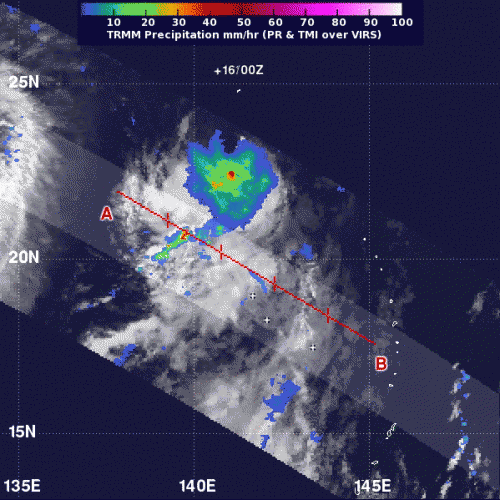NASA sees mostly moderate rainfall in Tropical Storm Maria

Tropical Storm Maria was born in the western North Pacific Ocean and has a large area of moderate rainfall, as NASA's TRMM satellite revealed today, Oct. 15. NASA's TRMM satellite noticed that most of Maria's rainfall was occurring northeast of the storm's center. Maria is the twenty-third tropical cyclone of the western North Pacific season.
When NASA's Tropical Rainfall Measuring Mission (TRMM) satellite passed over Tropical Storm Maria on Oct. 15 at 1329 UTC (9:29 a.m. EDT) light to moderate rainfall was occurring northeast of the center and falling at a rate between .78 to 1.57 inches/20 to 40 mm per hour. There was also a small area of heavy rain falling at 2 inches/50 mm per hour.
Tropical Storm Maria had maximum sustained winds near 50 knots on Monday, Oct. 15 at 1500 UTC (11 a.m. EDT). Maria was located near 22.7 North and 141.1 East, about 120 miles south of Iwo To, Japan. Maria was moving to the north at 18 knots.
The forecasters at the Joint Typhoon Warning Center expect Maria's center to be closest to Iwo To between 1800 UTC (2 p.m. EDT) on Oct. 15 and 0000 UTC on Oct. 16 (10 p.m. EDT, Oct. 15). Maria is headed north and is expected to intensify before heading northeast and becoming extra-tropical.
Provided by NASA's Goddard Space Flight Center




















